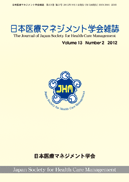Volume 14, Issue 1
Displaying 1-7 of 7 articles from this issue
- |<
- <
- 1
- >
- >|
Original Articles
-
Article type: Original Articles
2013Volume 14Issue 1 Pages 2-8
Published: May 01, 2013
Released on J-STAGE: October 13, 2020
Download PDF (734K) -
Article type: Original Articles
2013Volume 14Issue 1 Pages 9-13
Published: May 01, 2013
Released on J-STAGE: October 13, 2020
Download PDF (749K) -
Article type: Original Articles
2013Volume 14Issue 1 Pages 14-19
Published: May 01, 2013
Released on J-STAGE: October 13, 2020
Download PDF (718K)
Case Reports
-
Article type: Case Reports
2013Volume 14Issue 1 Pages 20-24
Published: May 01, 2013
Released on J-STAGE: October 13, 2020
Download PDF (1070K) -
Article type: Case Reports
2013Volume 14Issue 1 Pages 25-30
Published: May 01, 2013
Released on J-STAGE: October 13, 2020
Download PDF (1564K) -
Article type: Case Reports
2013Volume 14Issue 1 Pages 31-36
Published: May 01, 2013
Released on J-STAGE: October 13, 2020
Download PDF (873K) -
Article type: Case Reports
2013Volume 14Issue 1 Pages 37-40
Published: May 01, 2013
Released on J-STAGE: October 13, 2020
Download PDF (1022K)
- |<
- <
- 1
- >
- >|
